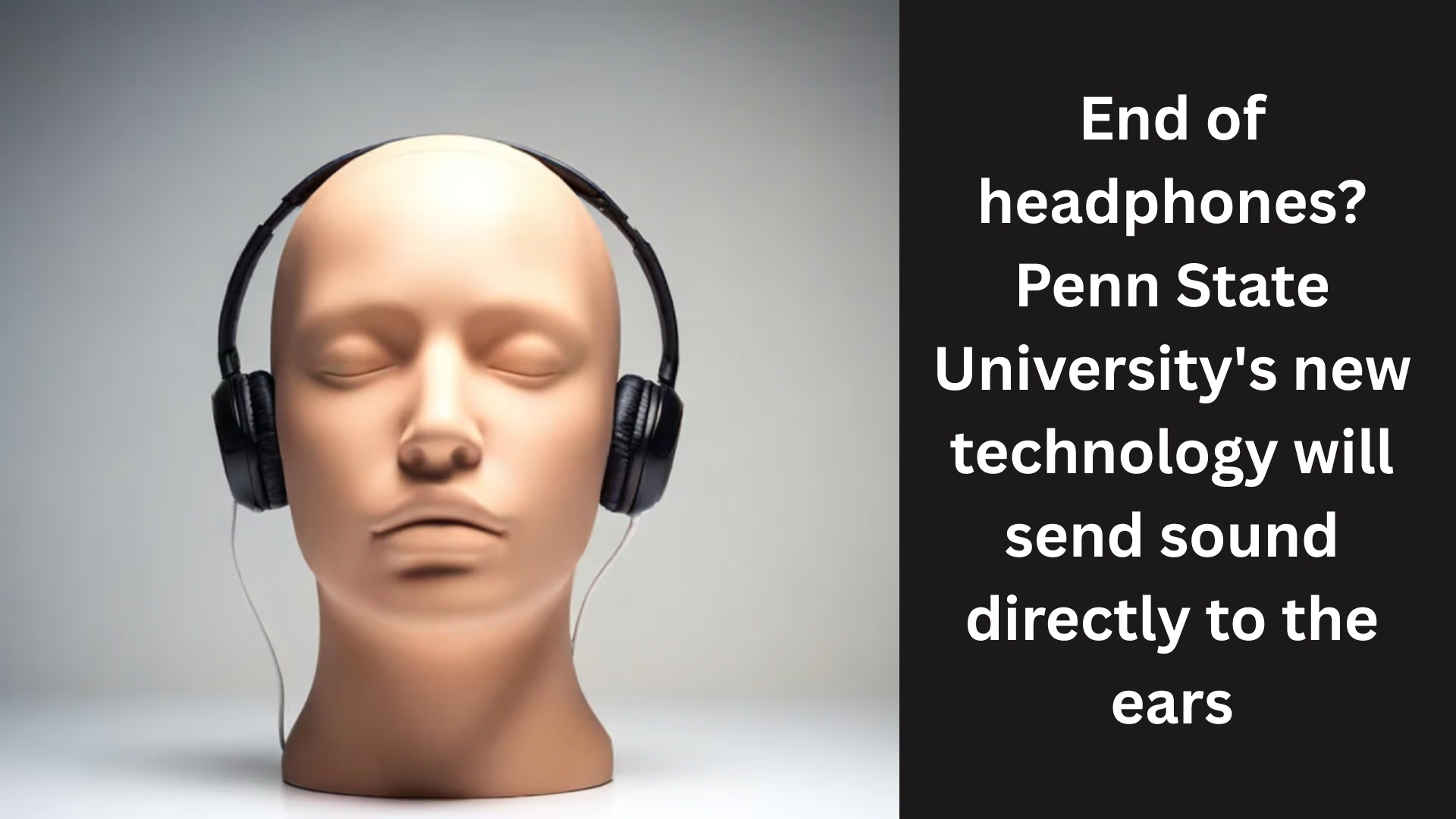In today’s fast-paced technological world, an innovation has emerged that could potentially eliminate the need for headphones altogether. Now you can listen to your favorite songs or podcasts without any headphones, and that too without disturbing the people around you. Scientists at Penn State University have turned this seemingly impossible idea into reality.
What is this new sound technology?
A team of scientists led by acoustics professor Yun Jing at Penn State University has developed a new technology called “Audible Enclaves”. The purpose of this technology is to make sound heard only at a specific point, while people around it experience complete silence.
Ultrasound and Acoustic Metasurfaces play a key role in this. Using metasurfaces, sound waves are bent in such a way that they only meet at a fixed point and produce sound.
How does this technology work?
Waves emitted from two ultrasonic speakers move in different directions.
Each wave has a different frequency.
When these two waves meet at a fixed point, sound starts to be heard through a local chemical reaction.
At any other place, these waves do not produce sound, creating a private audio zone.
The metasurface lens used in this process has been 3D printed by Xiaoxing Xia of Lawrence Livermore National Lab.
How was the Audible Enclave tested?
Jia-Xin “Jay” Zhong and his team tested this technology using a simulated dummy head and torso. Microphones were placed in the dummy’s ears so that the human listening experience could be accurately recorded. Additionally, a third microphone was used to analyze the area to determine if the sound is heard only at that point.
Key benefits of this technology
Sound frequency range: Works from 125 Hz to 4 kHz, which covers the normal human hearing range.
Compact design: The entire system occupies only 16 centimeters, i.e., the space of a pencil case.
Simple setup: Made of two ultrasonic speakers and 3D printed metasurface lenses.
Safe and private listening experience: Sound is heard only at the point where the waves meet.
Where can this technology be used?
Different passengers in cars will be able to listen to music of their choice without disturbing each other.
Students can listen to private notes in the classroom.
Employees working in open offices will get private audio without wearing headphones.
Voice quality and range
Currently, this system produces sound up to a distance of about 1 meter and up to 60 decibels, which is equal to the level of normal conversation. Researchers believe that both this range and volume can be increased by using more powerful ultrasound beams.
Will this technology replace future headphones?
This project has been named “Virtual Headset“. From this, it can be guessed that this new technology can replace headphones shortly. People will be able to enjoy private sound without wearing any device.
What is an Acoustic Metasurface?
This is a type of special lens that works to bend sound waves in a certain direction.
It is made with 3D printing technology.
With its help, ultrasonic waves are bent onto the desired path and focused at a certain place.
Future possibilities
It can be used for voice assistants and smart home systems.
It can also be a major contribution to Virtual Reality (VR) and Augmented Reality (AR).
Its use is possible in the fitness industry, medical field, and defense sector.
Conclusion
This amazing and revolutionary sound technology of Penn State University has proved that nothing is impossible in science. In the future, when you listen to your favorite music without wearing headphones and the people around you will not even get a hint of it, then understand that this is the same technology that has done this miracle.
Want to grow your website organically? Contact us now
Frequently Asked Questions (FAQs) related to ultrasonic sound technology
1. What are Audible Enclaves?
Audible Enclaves is a sound technology in which sound can be heard only at a particular place. Other people standing nearby cannot hear the sound.
2. How does this new technology work?
It uses ultrasound waves and acoustic metasurface lenses. Two separate ultrasonic beams are bent and focused at a fixed point. When both the beams meet at that point, sound is produced only there.
3. Can this technology completely replace headphones?
At present, this is unlikely, but if its use increases in the coming years, the need for headphones may be reduced. With its help, people will be able to listen to sound privately, even without wearing anything.
4. How far can sound be sent with this technology?
Currently, this technology is working only up to a distance of about 1 meter, but researchers are working to increase its range.
5. How loud is the sound?
Currently, the sound is up to about 60 decibels, which is equal to the sound level of normal conversation.
6. Where can it be used?
For different passengers in the car.
For listening to private audio in the classroom.
For private calls without headphones in the office.
In smart home systems and voice assistants.
7. What is an Acoustic Metasurface lens?
This is a 3D-printed lens, which helps in focusing ultrasonic beams at a fixed point by bending them in a certain direction.
8. Is this technology safe?
Yes, ultrasound waves are not harmful to humans. Its use is safe.
9. What effect will the arrival of this technology have on the headphone market?
The headphone market may face challenges in the long run. If new technology becomes affordable and commercially available, the use of headphones may decline.
10. Will it be possible to use it at home in the future?
Yes, as this technology develops further, it will be easily used in homes, offices, and public places.












